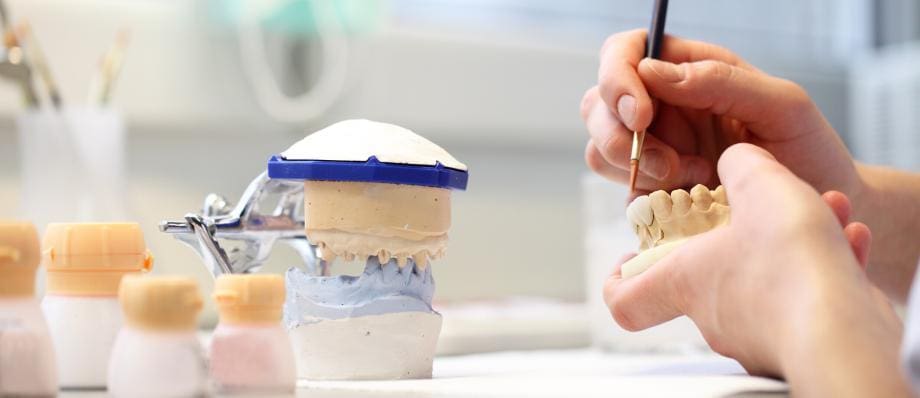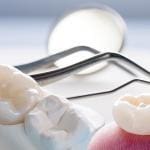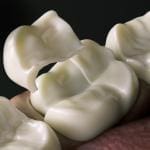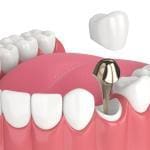In the realm of modern dentistry, dental ceramics have emerged as a remarkable innovation, revolutionizing the way we restore and enhance smiles. With their unique combination of strength, durability, and aesthetic appeal, dental ceramics have become the material of choice for various dental applications. From crowns and veneers to bridges and implants, these advanced ceramic materials offer unparalleled benefits that have transformed the field of restorative dentistry.
This comprehensive article aims to explore the world of dental ceramics, shedding light on their composition, manufacturing process, types, and the wide range of applications they serve. Additionally, we will delve into the advantages and limitations of dental ceramics, advancements in ceramic technology, and their impact on patient outcomes. Let us embark on a journey through the intricate world of dental ceramics, uncovering the secrets behind their widespread popularity and success.
Composition and Manufacturing Process of Dental Ceramics
Dental ceramics are primarily composed of inorganic, non-metallic materials that mimic the natural appearance and function of teeth. These materials include porcelain, zirconia, alumina, and glass-ceramics. Each composition offers unique properties and benefits, allowing dentists to choose the most suitable material for specific restorative needs.
The manufacturing process of dental ceramics involves several stages, including material selection, shaping, and firing. Initially, the desired ceramic material is selected based on the patient’s requirements and the specific dental application. The material is then shaped using either a traditional layering technique or a computer-aided design and computer-aided manufacturing (CAD/CAM) system. The shaped ceramic is subjected to high-temperature firing to achieve the desired strength, density, and shade. This firing process, known as sintering, ensures optimal physical properties and aesthetic results.
The following are some of the key components used in dental ceramics:
- Silicates
- Alumina (Aluminum Oxide)
- Zirconia (Zirconium Dioxide)
- Feldspathic Porcelain
- Glass-ceramics
- Leucite
Silicates
Silicates are the primary building blocks of ceramics. They consist of silicon and oxygen atoms arranged in a three-dimensional network structure. Silicates contribute to the strength and durability of dental ceramics.
Alumina (Aluminum Oxide)
Alumina is a widely used ceramic material due to its excellent mechanical properties. It provides high strength, wear resistance, and chemical stability to dental ceramics. Alumina is often used in the framework of metal-ceramic restorations or as a core material for all-ceramic restorations.
Zirconia (Zirconium Dioxide)
Zirconia is a popular ceramic material known for its exceptional strength and biocompatibility. It exhibits superior fracture toughness and resistance to bending compared to other ceramics. Zirconia-based ceramics are commonly used in dental applications where strength and durability are critical, such as crowns, bridges, and dental implants.
Feldspathic Porcelain
Feldspathic porcelain is a type of dental ceramic made from a mixture of minerals, including feldspar, quartz, and kaolin. It is widely used for its excellent esthetic properties, as it closely mimics the appearance of natural teeth. Feldspathic porcelain is commonly employed in veneers and anterior crown restorations.
Glass-ceramics
Glass-ceramics are derived from a combination of glass and crystalline phases. They offer a balance between strength and esthetics. Glass-ceramics contain various components, including silica, alumina, and other oxides. These materials undergo controlled crystallization to achieve the desired properties.
Leucite
Leucite is a crystalline material commonly used in dental ceramics. It is added to enhance the strength and thermal compatibility of the ceramic material. Leucite-reinforced ceramics are often used in the fabrication of crowns and bridges.
The specific composition and ratio of these components vary depending on the desired properties of the dental ceramic. Manufacturers carefully select and refine the composition to achieve the optimal combination of strength, aesthetics, and biocompatibility for each application.
It is worth noting that advancements in dental ceramic technology have led to the development of new materials and formulations with improved properties. These advancements continue to expand the range of options available to dentists and enhance the overall performance of dental ceramics in restorative dentistry.
Watch Dental Ceramics in Veneers Video
Types of Dental Ceramics
Dental ceramics can be classified into various types based on their composition and manufacturing process. The three most commonly used types of dental ceramics are:
- Porcelain-based Ceramics
- Zirconia-based Ceramics
- Glass-ceramics
Porcelain-based Ceramics
Porcelain or dental porcelain is a type of ceramic material that closely resembles natural tooth enamel in terms of appearance. It offers excellent aesthetic properties, making it ideal for anterior restorations such as veneers and crowns. Porcelain-fused-to-metal (PFM) restorations combine the strength of a metal substructure with the natural appearance of porcelain.
Zirconia-based Ceramics
Zirconia ceramics, derived from zirconium dioxide, exhibit remarkable strength and durability. They are highly resistant to fracture and abrasion, making them suitable for posterior restorations like crowns and bridges. Zirconia restorations can be fabricated using CAD/CAM technology, enabling precise customization and a perfect fit.
Glass-ceramics
These ceramics are created through controlled crystallization of glasses. They possess superior aesthetics and translucency, making them a popular choice for all-ceramic restorations. Glass-ceramics offer excellent biocompatibility and can be used for veneers, inlays, onlays, and crowns.
Applications of Dental Ceramics
Dental ceramics find extensive applications in restorative dentistry, enabling dentists to address various oral health concerns and enhance patients’ smiles. The versatility and natural appearance of dental ceramics make them suitable for the following dental procedures:
- Crowns and Bridges
- Veneers
- Dental Implants
- Inlays and Onlays
Crowns and Bridges
Dental crowns are tooth-shaped caps that cover damaged or weakened teeth, restoring their function and aesthetics. Ceramic crowns offer superior esthetics and durability compared to traditional metal-based restorations. Bridges, which replace missing teeth, can also be fabricated using dental ceramics for seamless integration with natural teeth.
Veneers
Dental veneers are ultra-thin shells bonded to the front surface of teeth to correct imperfections such as discoloration, chips, or misalignment. Ceramic veneers provide a natural-looking, stain-resistant solution, creating stunning smile transformations.
Dental Implants
Dental ceramics play a crucial role in implant dentistry. Ceramic materials are used to create implant crowns, abutments, and implant-supported bridges, ensuring both functional and aesthetic outcomes. The biocompatibility of dental ceramics promotes successful osseointegration, providing long-lasting results.
Inlays and Onlays
Inlays and onlays are indirect restorations used to repair moderate tooth decay or damage. Dental ceramics offer precise fit, durability, and esthetics, preserving natural tooth structure while restoring form and function.
Advantages and Limitations of Dental Ceramics
Dental ceramics offer a plethora of advantages that contribute to their widespread use in modern dentistry. Some key advantages include:
- Aesthetic Appeal
- Biocompatibility
- Strength and Durability
- Stain Resistance
- Precision Fit
- Cost
- Brittle Nature
- Restoration Thickness
Aesthetic Appeal
Dental ceramics closely resemble natural teeth in terms of color, translucency, and texture, ensuring seamless integration with existing dentition and enhancing the overall smile.
Biocompatibility
Dental ceramics are well-tolerated by oral tissues and exhibit excellent biocompatibility, minimizing the risk of allergic reactions or adverse effects.
Strength and Durability
Advanced ceramic materials such as zirconia offer exceptional strength, resistance to fracture, and longevity, ensuring long-term success and patient satisfaction.
Stain Resistance
Dental ceramics are highly resistant to staining, preserving their aesthetic appearance over time and reducing the need for frequent maintenance.
Precision Fit
CAD/CAM technology allows for precise customization and accurate fit of dental ceramic restorations, minimizing chair time and improving patient comfort.
Despite these advantages, dental ceramics do have certain limitations that need to be considered:
Cost
Compared to alternative materials, dental ceramics can be relatively expensive due to their advanced manufacturing process and high-quality aesthetic results.
Brittle Nature
While ceramic materials have improved in terms of strength, they are still more susceptible to fracture compared to metal restorations, especially in high-stress areas of the mouth.
Restoration Thickness
Due to the material properties of ceramics, the thickness of restorations may need to be greater compared to alternative materials, requiring more tooth preparation.
Advancements in Dental Ceramic Technology
The field of dental ceramics has witnessed significant advancements in recent years, driven by research, technological innovations, and a growing demand for superior restorative solutions. Some notable advancements include:
- High Translucency Zirconia
- Lithium Disilicate
- Digital Dentistry
- Monolithic Restorations
High Translucency Zirconia
Developed to enhance the esthetics of zirconia restorations, high translucency zirconia offers improved light transmission, creating a more natural and lifelike appearance.
Lithium Disilicate
This glass-ceramic material has gained popularity for its exceptional strength, making it suitable for both anterior and posterior restorations. It offers versatility and natural esthetics, allowing for minimally invasive preparations.
Digital Dentistry
CAD/CAM technology has revolutionized the fabrication process of dental ceramics. Digital scanning, computer-assisted design, and precise milling enable the creation of highly accurate and customized restorations, ensuring optimal fit and aesthetics.
Monolithic Restorations
Monolithic restorations, made from a single block of ceramic material, have gained prominence due to their superior strength, simplified fabrication process, and reduced risk of chipping.
Conclusion
Dental ceramics have undeniably transformed the
field of restorative dentistry, offering a perfect balance between strength and aesthetics. Through their composition, manufacturing process, and diverse applications, dental ceramics have become the material of choice for achieving natural-looking and durable dental restorations.
From the porcelain-based ceramics that mimic the appearance of natural teeth to the robust zirconia-based ceramics used for posterior restorations, dental ceramics provide a wide range of options to address various dental concerns. They are used in procedures such as crowns, bridges, veneers, dental implants, inlays, and onlays, enabling dentists to restore both form and function effectively.
The advantages of dental ceramics, including their aesthetic appeal, biocompatibility, strength, durability, and stain resistance, have contributed to their increasing popularity. Furthermore, advancements in ceramic technology, such as high translucency zirconia and lithium disilicate, have further improved their esthetics and strength.
While dental ceramics offer numerous benefits, it is important to acknowledge their limitations, such as higher cost and a relatively brittle nature compared to alternative materials. Dentists must consider these factors when selecting the most appropriate material for each patient’s specific needs.
Looking ahead, the field of dental ceramics is expected to continue evolving, driven by ongoing research and technological advancements. With the integration of digital dentistry, CAD/CAM technology, and the development of new ceramic materials, the future holds promise for even more precise and esthetically pleasing dental restorations.
In conclusion, dental ceramics have revolutionized the field of restorative dentistry, providing a perfect blend of strength, durability, and aesthetics. With their ability to mimic the natural appearance of teeth and their wide range of applications, dental ceramics have transformed the way we restore and enhance smiles. As advancements in ceramic technology continue to unfold, we can expect further improvements in the field, leading to even better outcomes for patients seeking dental restorations.





